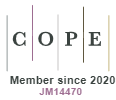Maximal respiratory pressures of Brazilian adolescents with different levels of physical activity
DOI:
https://doi.org/10.5585/conssaude.v12n2.4227Keywords:
Adolescent, Motor activity, Muscle strength, Respiratory muscles.Abstract
Introduction: Respiratory muscles strength is influenced by factors such as age, gender and anthropometry. In addition, physical activity may also influence it. Objective: To compare the values of maximal respiratory pressures in healthy adolescents with different levels of physical activity. Methods: Observational cross-sectional study was carried out. A total of 182 healthy adolescents were assessed. Maximal respiratory pressures were measured with a digital manovacuometer and the levels of physical activity with the short version of an international physical activity questionnaire. Oneway Anova was applied to compare the variables among groups classified according to the level of physical activity. Results: There was significant difference in respiratory pressures between the groups classified as irregularly active A and B and active/very active. These groups showed a mean MIP of 77.7±26.2 and 96.2±28.3cmH2O (p<0.001), respectively, and a mean MEP of 90.8±29.4 and 111.5±32.2cmH2O (p<0.001). Conclusions: The regular practice of physical exercise may significantly increase respiratory muscle strength in healthy adolescents.Downloads
Downloads
Published
2013-07-31
How to Cite
1.
Chaves GS da S, Teixeira MA, Freitas DA de, Mendes RE de F, Maciel Álvaro CC, Mendonça KMPP de. Maximal respiratory pressures of Brazilian adolescents with different levels of physical activity. Cons. Saúde [Internet]. 2013 Jul. 31 [cited 2025 Jun. 11];12(2):274-81. Available from: https://periodicos.uninove.br/saude/article/view/4227
Issue
Section
Applied Sciences
License
Copyright (c) 2013 ConScientiae Saúde

This work is licensed under a Creative Commons Attribution-NonCommercial-ShareAlike 4.0 International License.
Views
- Abstract 302
- PDF (Português (Brasil)) 188






